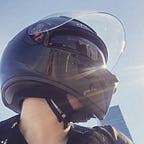=UXDI Remote User Experience Case Study
Roles: Research/Design&Prototyping/Client Facing
Project Duration: Two Weeks
Project Status: Complete
Project Overview
My team and I were tasked with researching how the massive change inflicted by a global pandemic has affected newly transitioned remote workers, what new challenges it presented, and how they’re coping. Assuming that certain work habits were affected more than others, we decided to narrow our research down to notifications, file sharing and organizing, and scheduling and participating in video conferences, but we definitely wanted to discover as much as possible outside of those areas as well which is why we included some more broad questions about topics such as distractions and productivity.
Scope of Work
Work ahead of us entailed we use our initial assumptions to craft a problem statement which would help us hash out all the questions we wanted to ask, then conduct the interviews, synthesize our findings, draw insights, use them to craft a persona which would represent our users and help us better identify with them as we’re designing solutions to their problems in a form of a feature that would enhance the Apple Phone app’s experience. To finalize our project we had to present our findings, our solutions and recommendations in a 6 minute timeframe.
Initial Problem Statement
How can we provide remote workers a way to help them prioritize tasks and notifications, schedule meetings, and find and share files, to be able to collaborate more effectively with their team and complete projects in a timely manner?
Research Phase
Goal of research
To validate or invalidate our initial assumptions as well as to find out more about our users needs and goals.
Methodology
We interviewed six participants who all share the experience of remote work due to the pandemic. We we’re trying to learn more about their experience in that context. In order to have a better understanding our questions were ranging from wide to in-depth. It was time to process all the data we collected.
Affinity mapping
We extracted a bunch of I-statements from our interview transcripts and notes and used them in a technique called affinity mapping which allows us to define how widespread some pain points are, allowing patterns to emerge. The following two dominated the field.
Most important insights we drew from affinity mapping were:
- Users are frustrated with the lack or urgency on the part of their coworkers
- They want to be able to communicate in real time
- They feel overwhelmed with their communication apps
- Some need to be available for important calls and messages
Persona
We had two things left to be done before proceeding to design stage. First of which was crafting a persona.
This is Marcus, a software engineer from Boston. An energetic achiever that greatly depends on multitude of apps most of which he uses for work. Marcus is bound to always keep his phone on given that he often gets important calls, and as a consequence he gets notified about all sorts of things he would rather not be thinking about while working. He likes that he actually saves time on commute but he is frustrated with somewhat reduced responsiveness of his team when he’s trying to reach them.
Revised problem statement
Last thing for us to do, as we were moving away from research phase, was to revise our problem statement.
How might we provide Markus with a way to help him prioritize notifications better, and give him the ability to reach his coworkers in real time, in order for him to be able to focus on what he does best?
Design Phase
Insights » features
Based on our insights and with Marcus in mind, we set out to create a feature for the Phone app that would consist of three parts allowing users:
- to prioritize contacts.
- to set availability to “busy” mode which only allows high priority contacts to push through with a ringtone or vibration.
Prioritization & Availability
The three-part feature we envisioned covered all of those needs with subtle changes to Contact screen and My availability screen which would live in settings, as well as two additional notifications. One appears in case Marcus changes a contact’s priority — the app looks up his availability and lets him know whether the contact can reach him given his current settings — offering him a shortcut to My availability screen where he can change his accessibility in settings. The second alert appears in case a caller is low-ranked and Marcus set his availability to busy. The alert would appear on callers phone this time, asking if the call is urgent. If so, Marcus’s phone would ring.
User testing
We conducted user testing in two rounds, 1st one on low-fi sketches, and admittedly a bit too complicated which compromised usability, and 2nd round with mid-fi sketches and improved interface. Below is a comparison of task score cards from the two rounds.
Recommendations & Insights
- Users would likely use the feature
- Even after redesigning the contact screen, it still takes users longer amount of time than other screens
We therefore recommend changing the verbiage across the flow, most importantly on contact screen, followed by another round of usability testing.
